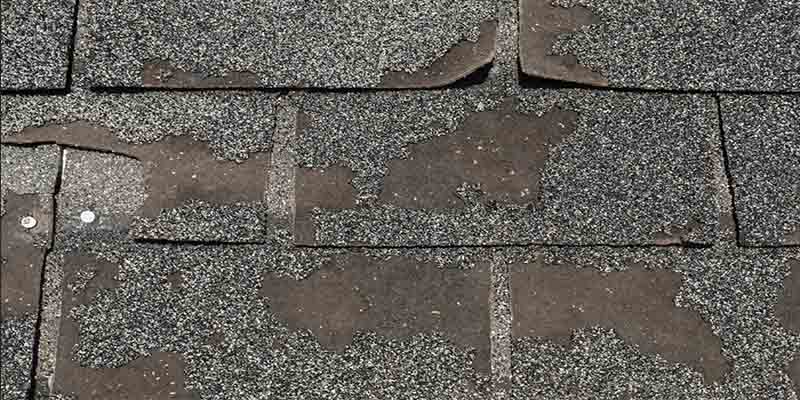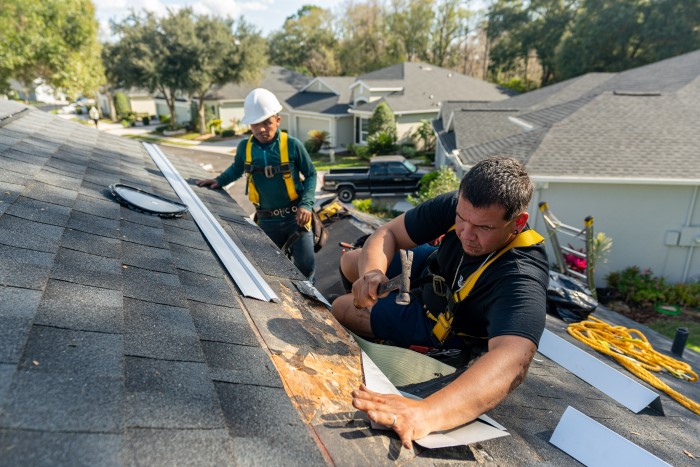Comprehending the Various Types of Roof Coverings: A Comprehensive Guide for Homeowners
With a range of choices-- varying from the typical gable to the modern level-- each type provides one-of-a-kind advantages and difficulties that must line up with the home owner's certain requirements and ecological considerations. As we check out the complexities of various roofing system types, it becomes noticeable that one size does not fit all; the ideal selection may surprise you.
Gable Roof Coverings
Saddleback roofs, defined by their triangular shape, are amongst one of the most prominent roof styles as a result of their simplicity and performance in shedding water and snow. This design includes two sloping sides that meet at a ridge, permitting efficient drain and lessening the danger of water accumulation. The steep pitch typically linked with saddleback roofs boosts their ability to handle heavy precipitation, making them ideal for different environments.
In addition to their sensible benefits, saddleback roofs offer visual versatility. They can be adapted to different building designs, from typical to modern-day homes. The layout can additionally suit extra functions such as dormer home windows, which boost natural light and air flow in the attic space.
Furthermore, saddleback roofs supply sufficient space for insulation, adding to energy performance. Property owners can select from a selection of roof covering products, consisting of asphalt shingles, steel, and ceramic tiles, additionally improving personalization alternatives.
Despite their benefits, saddleback roofs may need additional assistance in locations vulnerable to high winds or heavy snowfall. In general, the gable roofing remains a preferred option due to its blend of performance, resilience, and visual charm.
Flat Roofs
Level roof coverings are commonly recognized for their minimalist layout and useful applications, specifically in commercial and industrial setups (oahu roofing). These roofs include a virtually horizontal or horizontal surface, which enables for easy building and versatile space use. While they might do not have the visual appeal of angled roofs, level roofs provide many benefits, specifically in urban atmospheres where making best use of area is essential
Among the main advantages of level roof coverings is their accessibility. House owners can utilize the roof covering area for various functions, such as rooftop gardens, balconies, or photovoltaic panel installations. In addition, level roof coverings are usually much more affordable to keep and install compared to their sloped equivalents, as they need fewer materials and labor.
However, flat roofing systems do present specific difficulties. Appropriate drainage is necessary to protect against water pooling, which can lead to leaks and structural damage. Hence, choosing premium waterproofing products and routine examinations are crucial for making sure longevity. Common materials utilized for level roofings consist of built-up roof covering (BUR), changed asphalt, and single-ply membranes, each offering unique advantages. In general, flat roofing systems work as a useful and adaptable option for several house owners and companies alike.
Hip Roof Coverings
Hip roofs are defined by their sloped sides that merge at the top, forming a ridge. This layout stands out from saddleback roofs, as all four sides of a hip roofing system slope downwards toward the walls, giving a more steady structure. The angle of the slopes can vary, enabling flexibility in architectural aesthetics and functionality.
One of the primary benefits of hip roof coverings is their ability to stand up to heavy winds and negative climate condition. The sloped surfaces make it possible for better water drain, minimizing the danger of leakages and water damages. In addition, hip roofing systems supply enhanced attic room, which can be made use of for storage or perhaps transformed right into comfortable areas.
Nonetheless, creating a hip roofing can be more complicated and pricey than easier roofing types, such as saddleback roofs. The additional product and labor involved in creating the slopes and making certain appropriate structural stability can cause higher expenditures. In spite of these drawbacks, lots of property owners favor hip roof coverings for their longevity, visual charm, and capacity for energy effectiveness.
Mansard Roofings
Mansard roofs, often recognized by their unique four-sided layout, attribute two slopes on each side, with the reduced incline being steeper than the top. This architectural style, originating from France in the 17th century, is not just aesthetically enticing however functional, as it makes the most of the usable area in the upper floorings of a building. The steep lower incline enables even more clearance, making it an excellent option for loft spaces or attics, which can be converted right into living areas.
Mansard roofing systems visit here are characterized by their versatility, fitting various architectural styles, from standard to modern-day. They can be built with different materials, including asphalt roof shingles, slate, or steel, giving homeowners with a range of alternatives to fit their spending plans and preferences. In addition, the style enables for the assimilation of dormer windows, boosting all-natural light and ventilation in the upper degrees.
However, it is essential to consider the possible drawbacks. Mansard roof coverings may need more upkeep due to the intricacy of their style, and their high slopes can be challenging for snow and rain overflow. Overall, mansard roofs combine sophistication with functionality, making them a prominent option amongst homeowners seeking distinctive building functions.
Lost Roofing Systems
As homeowners significantly look for simpleness and functionality in their architectural layouts, dropped roofs have actually become a preferred selection. Characterized by a single sloping plane, a shed roof covering provides a minimalist aesthetic that enhances numerous home styles, from modern to rustic.
Among the key advantages of a shed roof covering is its straightforward construction, which commonly equates to lower labor and material expenses. This style permits efficient water drain, reducing the danger of leakages and water damage. In addition, the vertical incline supplies adequate room for skylights, enhancing natural light within the interior.
Dropped roofs additionally supply flexibility in regards to usage. They can be effectively incorporated into additions, garages, or exterior frameworks like sheds and structures. Furthermore, this roofing system design can fit numerous roofing products, including steel, asphalt shingles, or even green roofs, straightening with green initiatives.
Nonetheless, it is necessary to take into consideration regional climate problems, as heavy snow tons may demand adjustments to the roofing's angle or structure. On the whole, shed roofs present a practical and aesthetically pleasing choice for home owners wanting to make the most of performance without compromising design.
Verdict


Gable roofing systems, defined by their triangular shape, are amongst the most prominent roof designs due to their simplicity and performance in losing water and snow. oahu roofing. link The high pitch commonly linked with find gable roofing systems improves their capacity to handle hefty precipitation, making them ideal for various climates
While they may lack the visual charm of pitched roofings, level roofs use many benefits, particularly in metropolitan settings where making the most of space is essential.
